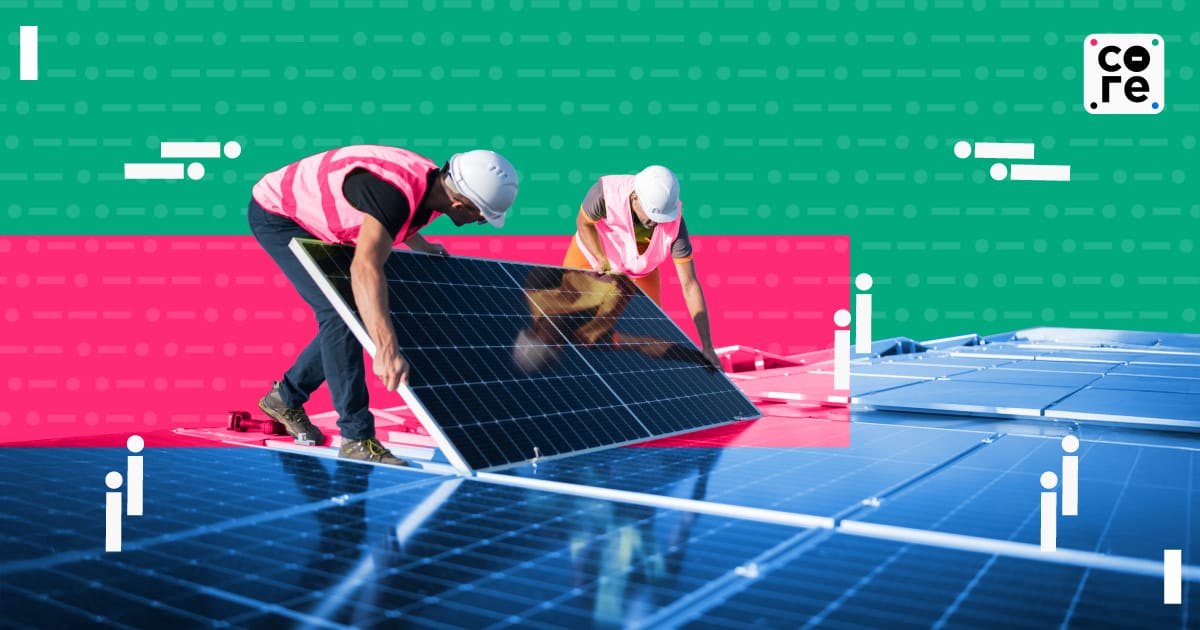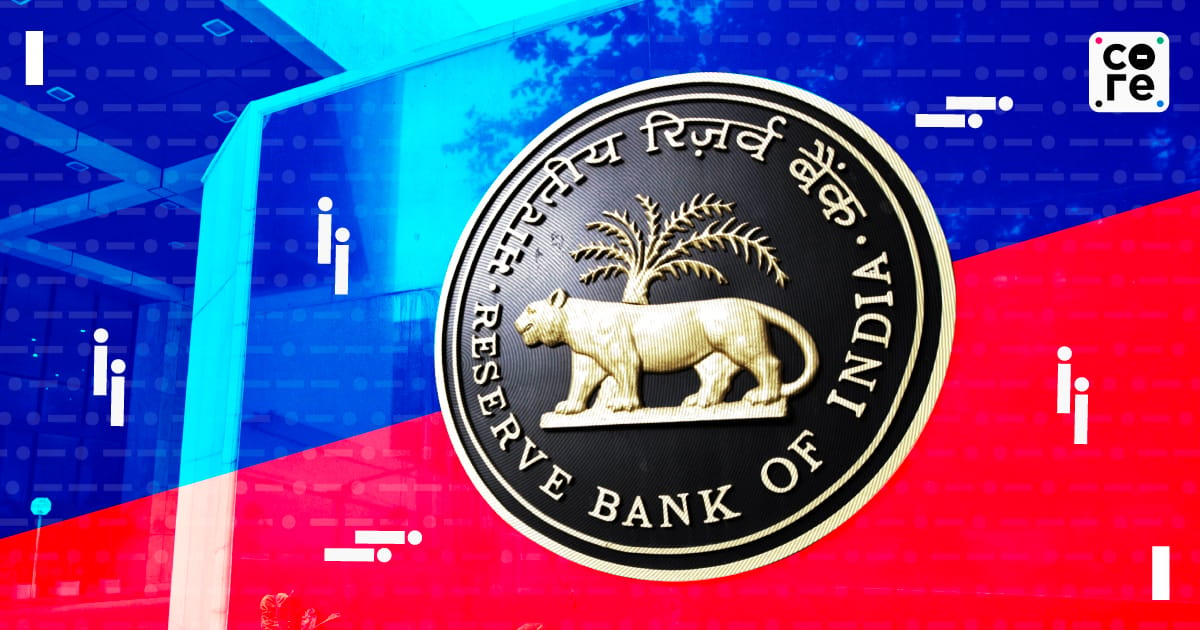- The Core
- Posts
- IPO Rush, Solar Glut
IPO Rush, Solar Glut
Good Morning. India’s solar manufacturers have hit the big leagues — 100 GW of module capacity, IPOs lined up, global recognition. But it isn't all sunshine for India's solar manufacturing sector. Oversupply, squeezed exports, and the entry of Reliance and Adani threaten to turn the boom into brutal consolidation.
Indian indices saw gains for the third consecutive session on Monday, after a few days of retreating last week, thanks to gains in information technology and banking stocks. The BSE Sensex closed at 81,790.12, gaining 582.95 points or 0.72%, while the NSE closed at 25,077, gaining 183.4 points or 0.74%.
In other news, does India have the guardrails to go along with the Reserve Bank of India’s (RBI’s) credit push? Meanwhile, India’s housing market keeps upward trajectory.
DECODE THE NEWS
Oversupply, Giants, Tariffs Clover India’s Solar Milestone
What?
India’s solar manufacturing sector hit a milestone that few other industries in the country can boast of — 100 gigawatt (GW) of solar module manufacturing capacity, ranking among the top solar manufacturers in the world.
India’s Ministry for Renewable Energy marked the milestone achieved in August as a turning point in India’s clean energy ambitions. This achievement has come along with all the typical hallmarks of a sector at its peak — entry of the giants, anticipation of consolidation and an IPO rush.
But growth has also brought with it some growing pains. The IPO pipeline is crowded, US tariffs have shrunk India’s biggest export market for modules, and the looming shadow of Reliance Industries and Adani Enterprises entering the industry.
Why?
Behind the IPO rush lurks a larger problem. The solar module industry appears to be getting ahead of itself.
“The module manufacturing capacity in India has scaled up significantly over the past three years to reach 100 GW driven by strong policy support. This is also given the fact that the annual solar capacity installations are expected to be in the range of 35-40 GW over the near to medium term, against the installed manufacturing capacity of 100 GW,” noted Rachit Mehta, Vice President & Sector Head, ICRA Ltd.
Others at SBI Caps estimate solar module capacity to reach 190 GW by 2027, which the firm noted, could contribute to an oversupply considering reduced scope for exports due to actions by the US in removing incentives for solar projects.
What Next?
As if tariffs and oversupply weren’t enough, the industry is also faced with the entry of India’s two biggest conglomerates — Reliance Industries and Adani Enterprises. Both companies are investing billions to establish integrated operations across the solar value chain — from polysilicon to modules. Each is targeting 10 GW of capacity.
“They can both kill the competition,” analysts at Bernstein wrote in a recent report on the new energy sector.
Why would these giants pose a threat to smaller players?
CONNECT THE DOTS
Does RBI’s Bold Credit Push Risk Outrunning India’s Safeguards?
The monetary policy announced recently was less of a monetary policy and more of a credit policy. Quite understandable, as much of the liquidity released in tranches through the previous monetary policy, via cash reserve ratio (CRR) reduction and the front-loaded rate cut, has yet to take its full effect.
Just as the extent of cuts was unexpected in the last policy, the measures announced to ease credit in this policy too were unexpected — as many as 22 — and the markets are still absorbing them. The regulator moved faster than expected in releasing the draft details of the measures soon after the policy announcement.
It is perhaps the biggest reform in the credit segment since the 1989 abolition of the Credit Authorisation Scheme — a scheme introduced in 1965 that required the Reserve Bank of India’s prior approval for all loans exceeding Rs 1 crore.
There were other restrictive regulations as well, which have all been proposed to be ‘repealed’ in one go. Abolition of such antiquated regulations was undoubtedly the most required regulatory requirement for India’s dream of becoming the global manufacturing hub and Viksit Bharat, a little over two decades from now.
India cannot be where it dreams to be in the next two decades without bold leaps. But risk-based measures to succeed need mature markets. Do we have them?
MESSAGE FROM OUR SPONSOR
Software sprawl? That’s SaaD.
Software was supposed to make work easier. Instead, most teams are buried under it.
That’s SaaD – Software as a Disservice. Dozens of disconnected tools waste time, duplicate work, and inflate costs.
Rippling changes the story. By unifying HR, IT, and Finance on one platform, Rippling eliminates silos and manual busywork.
HR? One update applies to payroll, benefits, app access, and device provisioning instantly.
Finance? Close the books 7x faster with synced data.
IT? Manage hundreds of devices with a single click.
Companies like Cursor, Clay, and Sierra have already left outdated ways of working behind – gaining clarity, speed, and control.
Don’t get SaaD. Get Rippling.
CORE NUMBER
60.9
That’s India’s Services PMI in September, down from 62.9 in August, according to HSBC and S&P Global. While the pace of growth eased, the reading stayed well above the neutral 50 mark, signalling the sector’s 26th straight month of expansion.
The Backstory: Softer international demand dragged on new orders, with exports rising at their weakest pace since March. Job creation also slowed, and price hikes were the mildest in six months.
What This Means Going Forward: Despite the cooling, business optimism hit a six-month high as firms bank on tax cuts, efficiency gains, and competitive pricing.
Expert Speak: “Nothing in the survey suggested a big loss in growth momentum… Future Activity Index rose to its highest level since March,” said Pranjul Bhandari, chief India economist at HSBC.
Manufacturing PMI eased to 57.7 in September (weakest since May), while the Composite PMI slipped to 61.0, reflecting a broad-based slowdown.
FROM THE PERIPHERY
Insuring Against Heat
India is considering a nationwide climate-linked insurance programme to cushion citizens from extreme weather events, according to a Reuters report. The government is working with insurers, regulators, and reinsurers to design a parametric model, which pays out automatically when weather thresholds such as heat or rainfall are exceeded.
The Lead: This system could deliver faster, more transparent relief than traditional insurance. The move builds on smaller pilots in states like Kerala, Nagaland, and Maharashtra.
What This Means Going Forward: Officials are exploring funding options, including surcharges on utility bills. If implemented, the plan would make India one of the first major economies to use insurance as a large-scale climate adaptation tool.
Oil Flows, Tariff Rows.
A senior Indian government official said there is enough Russian crude available in global markets for Indian refiners, despite recent attacks on Russian energy infrastructure. The official told Reuters that imports from Russia remain stable and uninterrupted.
By the Numbers: India is also considering increasing imports of US crude and liquefied petroleum gas, after it levied a 50% tariff on Indian exports because of India’s relationship with Russia.
Pivot: But, in spite of the steep duty, Russian oil continues to account for a significant share of India’s crude imports. India is hedging its bets by continuing trade talks with the US.
Realty Rally
India’s housing market stayed on its upward trajectory in Q3 2025, with property prices rising across all major metros despite high interest rates, Business Standard reported. Anarock data shows average pan-India rates climbed 9% year-on-year (YoY) to Rs 9,105 per square feet.
By The Numbers: The National Capital Region (NCR) led the rally with a sharp 24% jump to Rs 8,900 per square feet, outpacing Bengaluru (10%) and Hyderabad (8%). Developers say NCR’s momentum reflects shifting buyer behaviour towards larger, lifestyle-led homes in hubs like Gurugram, Noida, and Dwarka Expressway.
Flashpoint: Mumbai Metropolitan Region (MMR) remained India’s costliest market at Rs 17,230 per square feet, up 6% YoY, nearly double the national average. Bengaluru, Chennai, Hyderabad, Pune, and Kolkata also reported steady gains, signalling broad-based resilience in the residential real estate market even amid tight supply and rising home loan EMIs.
PODCASTS
You Can Bet On Hundreds Of Stocks or Just On Gold
On Episode 696 of The Core Report, financial journalist Govindraj Ethiraj talks to Rajat Maheshwari, chairman of the Singapore Chapter of the Global Anti-Scam Alliance (GASA) and Senior Vice President, Strategic Growth, Asia Pacific at Mastercard.
You can bet on hundreds of stocks or just on gold
The financial system is reporting higher lending
Why there is a global shortage of the gas turbines
How did online scams become a trillion dollar industry so fast?
Eli Lilly to invest $1 billion in India for local manufacturing too
AI mania continues as AMD stock prices jump 25% after signing a deal with OpenAI for GPUs
MESSAGE FROM OUR SPONSOR
Is Your Ad Spend Really Paying Off?
See how creator-led partnerships can boost sales with Levanta’s Affiliate Ad Shift Calculator.
Get instant insight into potential revenue lift, ROI gains, and efficiency improvements based on your current digital advertising strategy.
Run your numbers to find out how small shifts could drive big results.
THE TEAM
✍️ Zinal Dedhia, Kudrat Wadhwa | ✂️ Rohini Chatterji | 🎧 Joshua Thomas
🤝 Reach 80k+ CXOs? Partner with us.
✉️ Got questions or feedback? Reach out.
💰 Like The Core? Support us.






